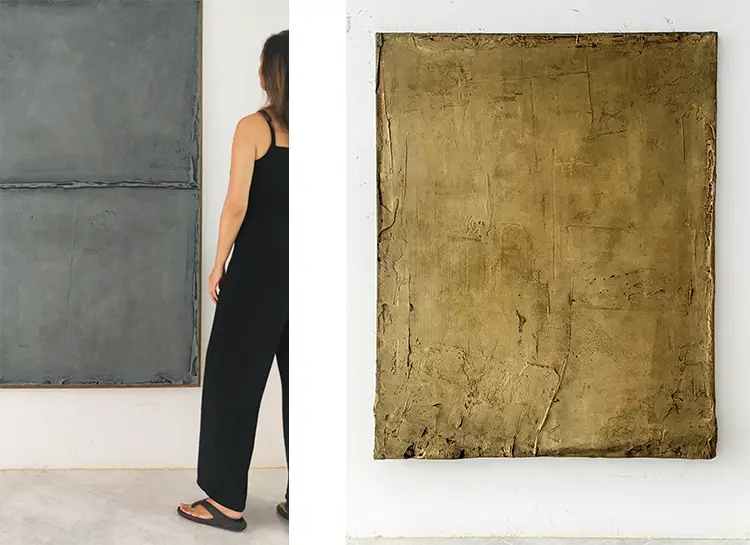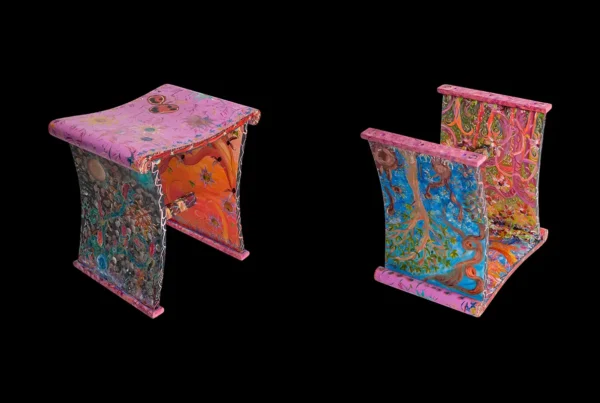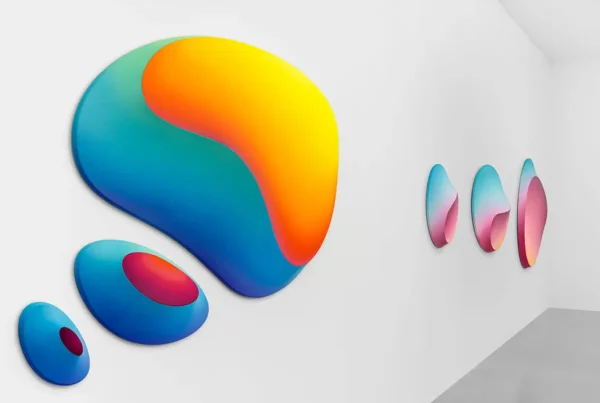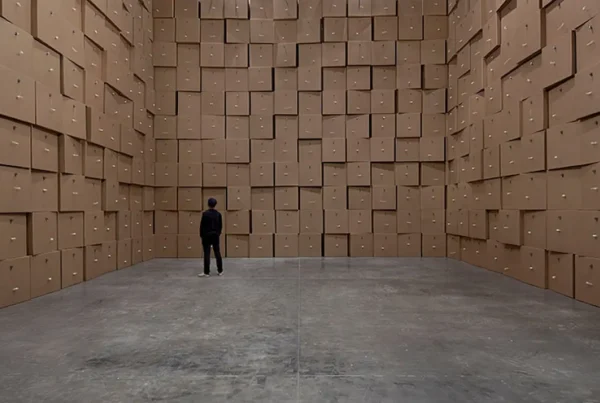“I work a lot with memory, with what stays in the body even when time passes.”
Threading Meaning Through Material
Antonia Ferrer’s artistic practice invites a deep engagement with materiality, gesture, and the silent resonance of the natural world. Born in Seville in 1965 and currently based in Valencia, Spain, Ferrer is a self-taught artist with a degree in Art History from the University of Valencia. Her approach bridges painting and sculpture, grounding her work in texture, intuition, and a profound sensitivity to surface and light.
Ferrer’s compositions are far from passive. They assert themselves through a quiet but insistent presence, inviting viewers into a sensory dialogue that goes beyond the visual. Her works begin not with a blank canvas but with raw materials: sand, dust, soil, and pigment. These substances, elemental and often ephemeral, form textured grounds that become living terrains. Onto these, she applies color in a process guided by chance and response, embracing the unpredictable interactions between material and gesture. The outcome is never fully planned; however, it is not arbitrary. Ferrer’s practice moves fluidly between control and surrender, allowing each work to emerge as a negotiation between matter and movement.
What makes Ferrer’s work particularly resonant is its capacity to evoke without directly depicting. Her surfaces suggest landscapes, the passing of time, or the remains of a ritual, while remaining abstract and open. Drawing on Eastern aesthetics and the legacy of artists such as Antoni Tàpies, Eduardo Chillida, and Mark Rothko, Ferrer’s language is one of reduction, of doing more with less. Her compositions are quiet but not austere, minimal yet emotionally charged. It is in this careful balance that the power of her work resides.
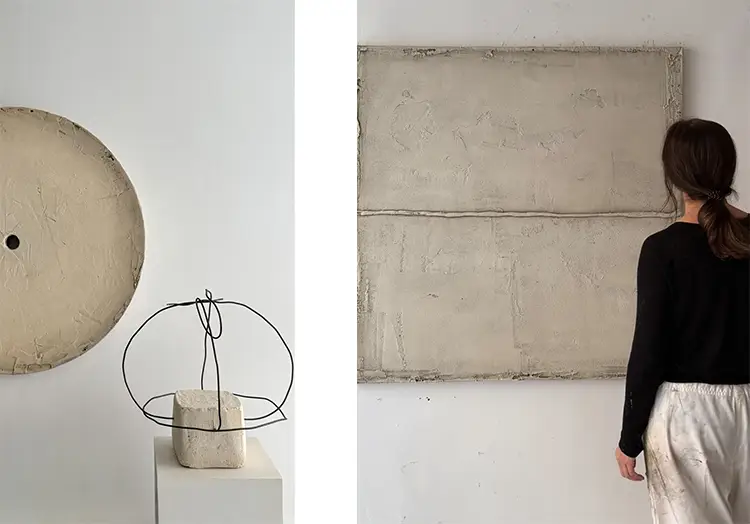
Antonia Ferrer: Between Gesture and Accumulation
In Ferrer’s hands, art becomes a tactile meditation. Her process is rooted in physical interaction with materials, where gestures are not performative but essential; acts of marking, layering, and responding to what the surface offers. A stroke of pigment may follow a crack in the soil; a shift in texture might guide the next decision. Every action leaves behind a trace, not only of the artist’s hand but of time, gravity, and material transformation.
This physical dialogue with the work is central to Ferrer’s exploration of memory, not as narrative, but as atmosphere and presence. Her surfaces hold emotional residue, even when stripped of overt symbolism. The textures she creates can recall the dry heat of a Mediterranean landscape, the erosion of ancient walls, or the feeling of something almost forgotten. The sense of memory in Ferrer’s work is spatial and tactile rather than illustrative. It lingers in folds, cracks, and layers, quietly revealing itself to those who look closely.
Rather than directing interpretation, Ferrer allows her work to breathe. Viewers are not told what to see or feel. They are invited to enter a space of contemplation. Her practice offers a moment of pause and a slowing down, where materials, marks, and textures become conduits for thought and emotion. This openness is not accidental. It reflects her commitment to the elemental and to what remains once ornament is stripped away.
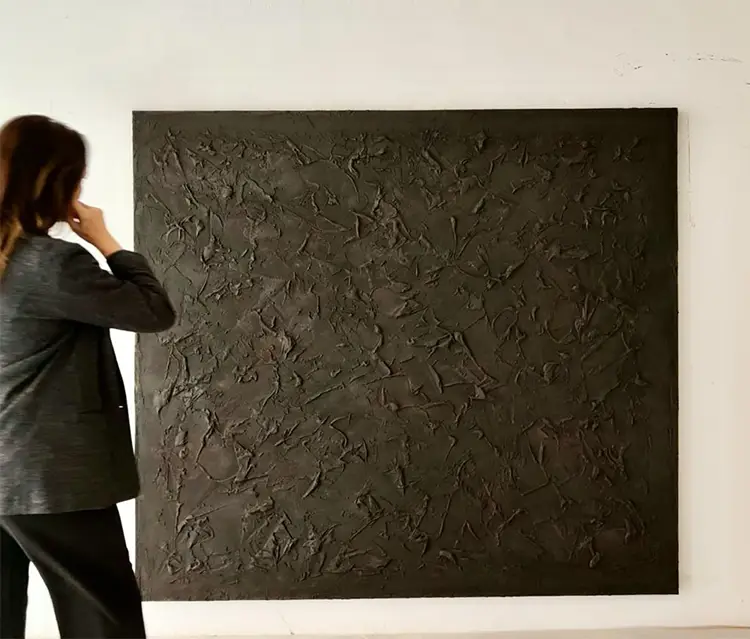
Echoes of Place, Traces of the Everyday
Ferrer’s work is deeply informed by place, not in the sense of literal landscapes but through the sensory and material conditions of her surroundings. Living and working in Valencia, she draws from the Mediterranean light and climate, from the textures of stone, dust, and earth. Her references are not site-specific; they are distilled and universal. Her surfaces speak of nature, time, and impermanence, rather than of any one geography.
Her walks along the beach provide ongoing inspiration. She observes the sea’s effect on rocks, driftwood, and shells—the processes of erosion, sedimentation, and change. These elements inform her restrained, monochromatic works, rendered in a neutral, oil-based palette that feels calming and inhabitable. She is not interested in spectacle but in intimacy, a closeness between viewer and object, matter and memory.
The influence of Eastern philosophies and aesthetics is also present in her work, particularly in her use of space and silence. Ferrer embraces the imperfect, the incomplete, and the transient. These values echo through her process and in the works themselves, which often appear weathered, as if they have already lived other lives.
Ferrer’s practice continues to evolve, expanding from surface to space. Recent works suggest an increasing interest in sculptural formats and installation, allowing her to explore how material can inhabit and transform environments. This shift reinforces her core concerns: how memory, matter, and perception interact in ways that are quiet yet deeply affecting.
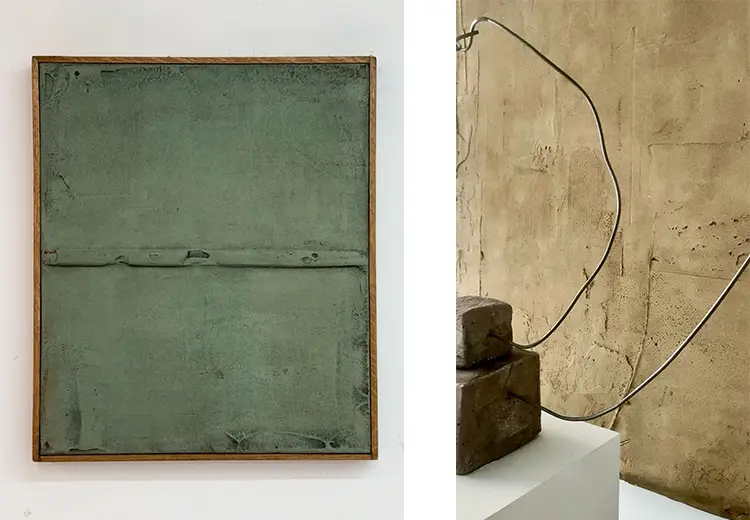
Antonia Ferrer: Expanding the Intimate Archive
In her recent work, Ferrer explores memory as structure, something that can be layered, compressed, and reactivated through touch and time. Using paper and textile alongside her foundational materials, she constructs surfaces that embody movement and change. These are not static images but fields of energy; folded, cracked, and alive. Each layer both hides and reveals, holding emotional residue like sediment.
As she continues to move toward more spatial forms, Ferrer is not abandoning her roots but extending them. Installation offers her new ways to immerse the viewer and to create environments that hold the same intimacy as her smaller works but on a larger, more enveloping scale. In these expanded formats, the viewer does not just observe; they inhabit the memory-space she constructs.
Among her most meaningful works is Cuerdas, a piece created during a difficult time. Almost empty and white, with a frayed rope at its center, it evokes calm after a storm—the dignity of what has been eroded. Like much of her work, it conveys emotion without explanation, allowing presence to speak on its own terms.
Even as her work grows in scale and ambition, Ferrer remains committed to her core principles: working with what is elemental, letting the material speak, and resisting the pressure to explain. Her upcoming exhibitions across Barcelona, Copenhagen, and Los Angeles promise to deepen these explorations. Through every grain of sand, every layer of pigment, Ferrer continues to build a subtle but profound archive of what endures when all else fades.
